Upon receiving your new houseplant, it is natural to want to immediately repot it into a larger pot. After all, it is eventually going to be a larger plant, right? However, putting plants into big pots too soon, especially slower-growing indoor plants with less access to light, can cause them undue stress. Instead of repotting immediately, take some time to become acquainted with the new plant, determine its soil and watering needs, look for indications that the plant is ready for a new pot, determine if repotting would make caring for the plant more difficult, and only repot when necessary and during the right time of year.
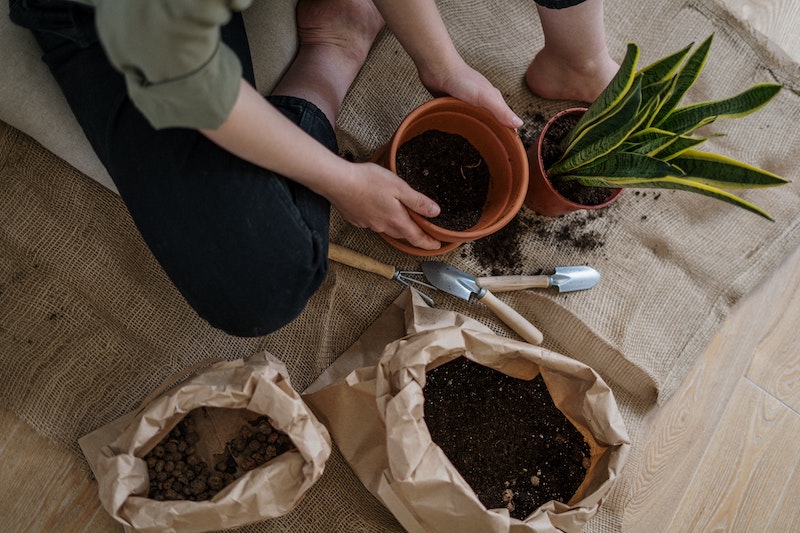
In general, houseplants can remain in the same pot for a couple years at a time. When you repot a plant into a bigger pot, you add a fair amount of soil around the root ball. This empty soil, with no roots in it yet, tends to stay damp for longer. For this reason, certain houseplants perform best when kept in the same smaller pot for years at a time; they may react poorly to having extra damp soil around their roots. This is especially true for slow-growing cacti, succulents, and some semi-succulents that prefer to dry out in between waterings. In addition, because plants tend to grow slowly or go dormant in the winter, repotting in the fall and winter can make it more difficult for roots to dry out, increasing the chance for root damage. Try to save all major repotting projects for the early spring, allowing your plants all spring and summer to grow into their new pot.
Potting Houseplants
If you decide to move a houseplant from its plastic grow pot into a decorative pot, it is best to start with a pot that is about the same size as the pot the plant is currently in. For example, if you purchased a plant in a 6-inch plastic grow pot, choose a decorative pot that is about 6 inches wide and has drainage holes. This transfer from one pot to another of the same size is not likely to cause too much stress and can be done at any time of year. If the decorative pot you choose does not have drainage holes, however, it is best to keep your plant in that plastic grow pot and place it inside of the decorative pot. That way, you can lift the plastic pot out of the decorative pot and water it separately, preventing the roots from sitting in water.
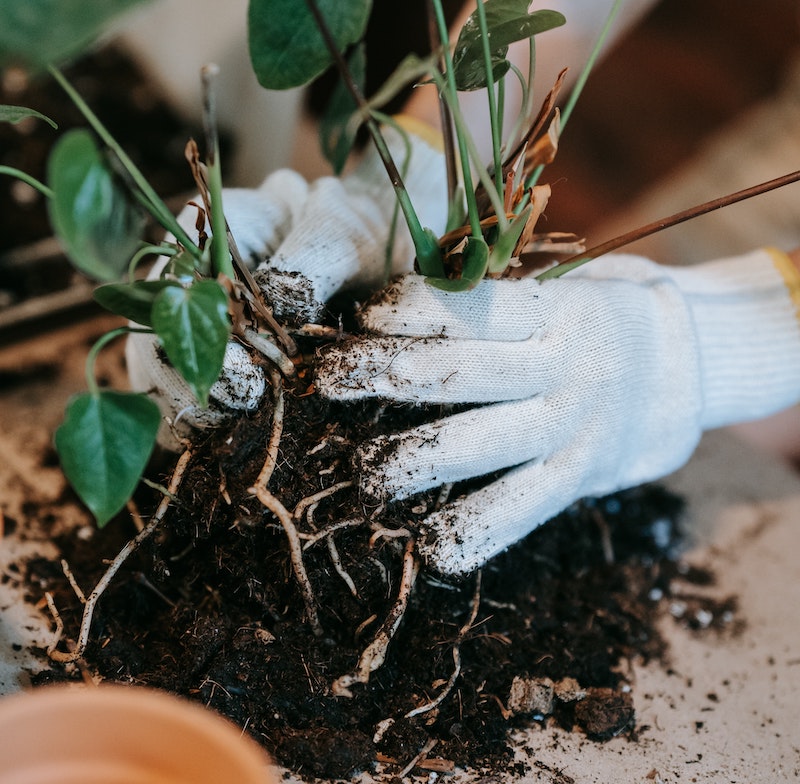
How to Pot a Houseplant
- Squeeze the sides of the plastic grow pot to loosen up the roots.
- Place the grow pot on its side or tip the pot upside down completely, gently tugging on the base of the plant or pushing up through the drain holes to pull it from the pot.
- Once the root ball is free, you can squeeze it gently to loosen the roots.
- Place the root ball in the new pot, leaving about 1/2 to 1 inch from the top of the soil to the rim of the pot to aid in watering.
- If the new pot is deeper, add a bit of potting soil to the bottom of the pot to raise the plant a bit. If there is any room around the sides of the root ball, fill it in with soil, gently pressing the soil down but not compacting it too much - water needs to be able to flow through the soil, and roots need to be able to grow!
- Avoid adding soil on top of the root ball, as the plant should be planted as deep in soil as it previously was. Extra soil around the main stem can lead to rot issues and reduce gas exchange at the surface roots.
Repotting Houseplants
After your plants have been in the same pot for a couple years, it may be time to repot them, either to replenish their soil or provide them more room to grow. Some signs that your houseplant is ready for a new pot include:
- Roots growing over top or out the bottom of its pot
- Difficulty keeping the plant adequately watered
- Water flowing through the pot too quickly due to a lack of soil
- Growth has slowed or stopped entirely (first ruling out other factors such as inadequate light, improper watering, lack of nutrients, etc.)
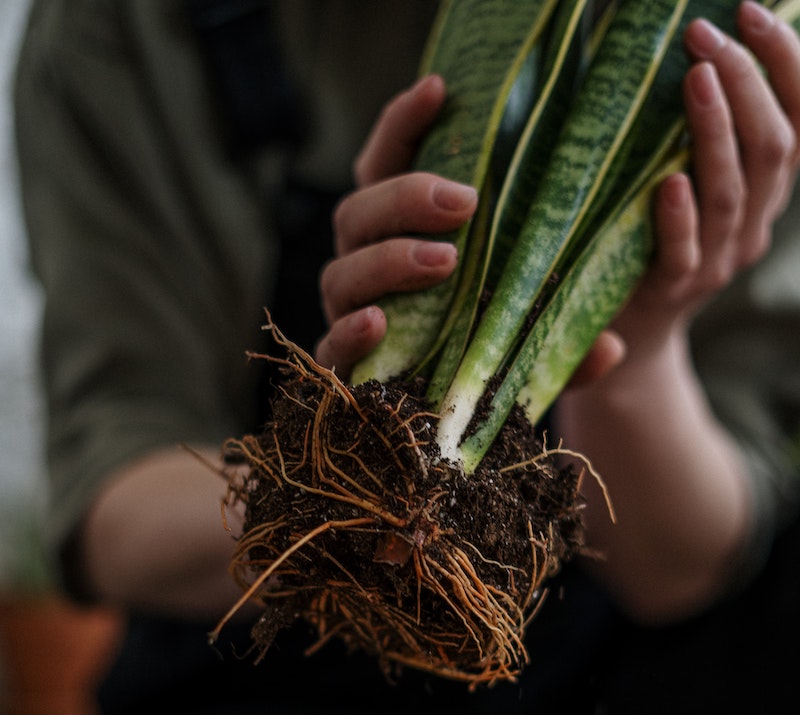
When repotting, choose a pot that is only an inch or two bigger than the previous. Certain pots are better for some plants than others. For example, terra cotta pots are porous, pulling moisture from soil and drying roots out faster; this makes them ideal for cactus and succulents but tricky for ferns and Calatheas. Always try to choose pots with drainage holes when planting directly into a new pot, or keep a plant in a plastic pot that can be dropped into a decorative pot.
Choose the best soil for the plant you are repotting and add it to the bottom of the pot and sides, patting it down firmly enough to provide support but not so firm that it will be difficult for roots and water to move through the soil. It is unnecessary to add rocks to the bottom of pots as they reduce the amount of soil available to the plant and cause accumulation of water in the adjacent soil. Once the plant is repotted, water thoroughly until water exits the drain holes.
Best Soil For Houseplants
Choosing the appropriate soil for your plant and using a high-quality mix is what will set you up for success. Not all soil works the same for certain plants. For example, succulents and cacti need to be planted in a medium that drains and dries out quickly, as their roots are prone to rotting when they are wet for too long. Ferns and Calatheas like consistently moist soil, something that a cactus mix won't be able to provide. Certain Philodendrons and Anthuriums are hemi-epiphytes, preferring a chunky, airy mix containing orchid bark. Ultimately, knowing what kind of plant you are repotting and addressing its specific watering and care needs will allow you to choose (or create) the perfect potting mix.
Soil For Houseplants With Low Water Requirements
Examples: Succulents, Sansevieria, ZZ, Cacti, and Semi-succulents like Hoya
These plants need to dry out completely in between waterings, doing well in fast-draining soil that only holds onto water for enough time to be absorbed by the roots. Ingredients include potting soil, sand, gravel or grit, and perlite or pumice.
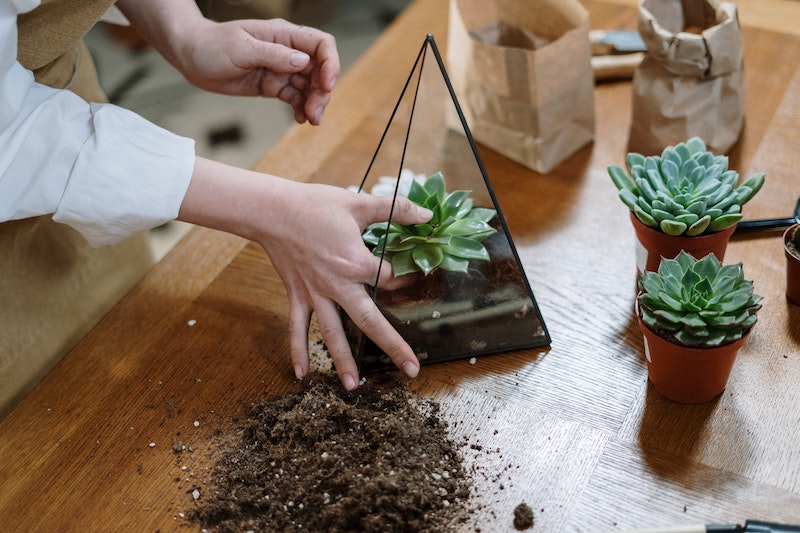
Soil For Houseplants With Average Water Requirements
Examples: Monsteras, Philodendrons, Epipremnum (Pothos), Ficus, Syngonium
The majority of houseplants like to dry out slightly in between waterings, preferring well-draining soil that holds onto moisture for a bit but doesn’t stay soggy. These mixes may contain peat moss or coco coir, perlite or vermiculite, sand, and worm castings or compost. Some of the plants in these families prefer a bit of orchid bark mixed in to provide additional air flow.
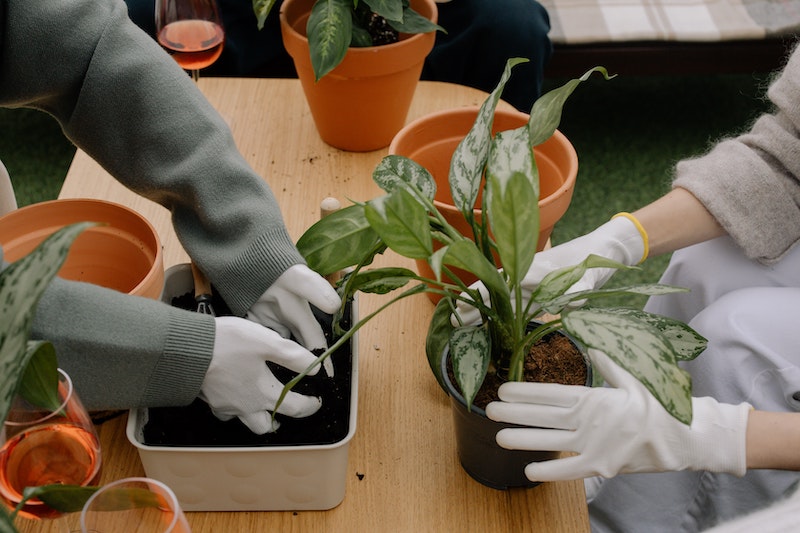
Soil For Houseplants With Above Average Water Requirements
Examples: Ferns and Calathea
Plants that need consistently moist soil do well in potting mixes that retain moisture but still allow for air flow and drainage. Ingredients include peat moss or coco coir, potting soil, vermiculite and perlite.
While this is a general guide, there is variation within each plant family when it comes to soil. Understanding a plant’s watering needs will help determine what soil will work best. Some houseplants do just fine in a store-bought mix!
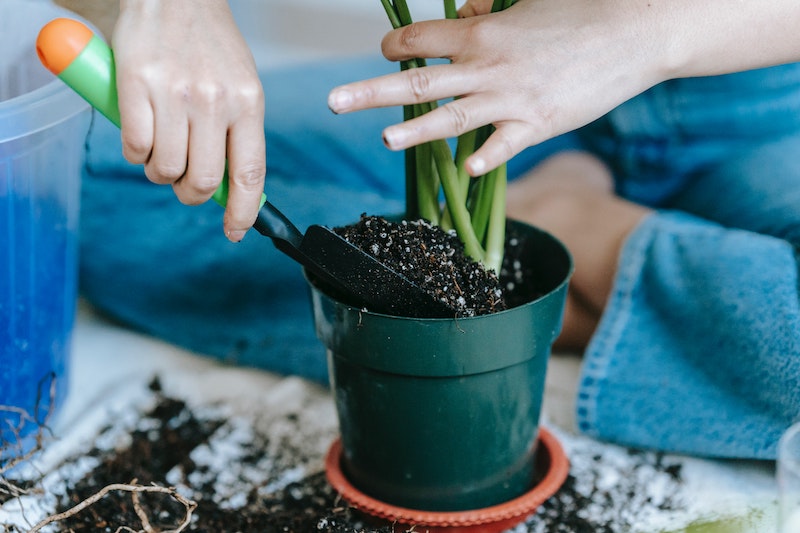
Houseplant Drainage
Proper drainage is the best way to mitigate watering issues in houseplants. When looking to repot a plant, choose a pot that has large, adequate drain holes to allow for excess water to drain when watering. Water draining out the bottom of a pot is one way to make sure that you are adding enough water to thoroughly saturate a plant’s roots. In addition, drain holes allow for a bit of air to enter into them, providing roots with essential oxygen and air flow.
Decorative indoor pots often come without drain holes these days. This leads to overwatering when houseplants are planted directly into them because their roots are sitting in water at the bottom of the pot. While it is possible to keep a plant happy and healthy in a pot without a drain hole, it takes a bit more finesse. Instead, try keeping a plant in a plastic grow pot that can be dropped into a decorative pot and then removed when watering is necessary.
Potting Houseplant Tips
- Repot every 2 years or so
- Repot in the spring
- Choose a pot that is only slightly bigger
- Choose a pot with drain holes
- Use the right soil for the plant
Plants We Recommend
 |
Author Lynn Gusman - Published 1-12-2023 |
